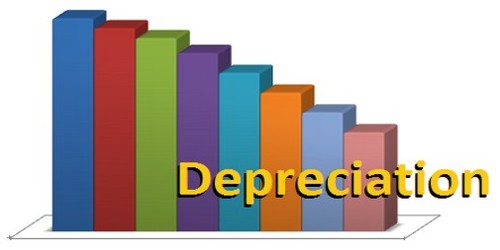Depreciation is the measure of wearing out of a fixed asset. All fixed assets are expected to be less efficient as time goes on and as they are continuously used in a business, for example.
The causes of depreciation may be internal or external. The internal causes arise from the operation of any cause natural to or inherent in the asset itself. External causes arise from the operation of forces outside the business.
Internal Causes
- Wear and tear:
Wear and tear is an important cause of depreciation in case of a tangible fixed asset. Assets diminish in their value as they are constantly used in the organization. The difference between the value of an asset when it was bought and its value is used for sometime represents wear and tear. Any asset will gradually break down over a certain usage period, as parts wear out and need to be replaced. It is due to the use of the asset. Other assets, such as buildings, can be repaired and upgraded for long periods of time. Although assets are kept in working conditions, a time comes when only scrap value remains. The difference between the value of an asset when it was purchased and its value after being used for some time period represents wear and tear of the asset.
- Disuse:
When a machine is kept continuously idle, it becomes potentially less useful. Assets are bound to lose their value as time progress. Consequently, productivity declines. Assets exhaust their value and are found useless after the elapse of a certain fixed period. It is true that assets have a definite age. These assets have a definite period of life after which they exhaust in value and become useless.
- Maintenance:
The value of machine deteriorates rapidly because of lack of proper maintenance. Even when an asset is not in actual use it loses value according to age or due to efflux of time or when time passes. This is true of assets like leasehold properties, patents, and copyrights.
- Depletion:
Natural resources such as mines, quarries, and oil wells are of a wasting character. With the raising of coal from a coal mine, the total deposit reduces gradually and after some time it will be fully exhausted. As a result of gradual exhaustion, the value of wasting assets declines. Then its value will be reduced to nil. It refers to the physical deterioration by the exhaustion of natural resources eg., mines, quarries, oil wells, etc. They are consumed gradually. The process of earning income through extraction causes depletion of wasting assets. . These assets lose their value due to the extraction of oil, depletion of minerals, and metals. Thus, the value of wasting assets declines due to gradual exhaustion.
- Deterioration
Deterioration means an erosion in the value of those assets which have a very short life. Proper repairs and maintenance of these assets cause an additional loss by way of deterioration. The fall in the value of those assets refers to depreciation.
- Obsolescence:
Some assets are discarded before they are worn out. This happens when an asset becomes old fashioned or obsolescent on account of later inventions. For example, hand machines are replaced by power machines for better efficiency.













